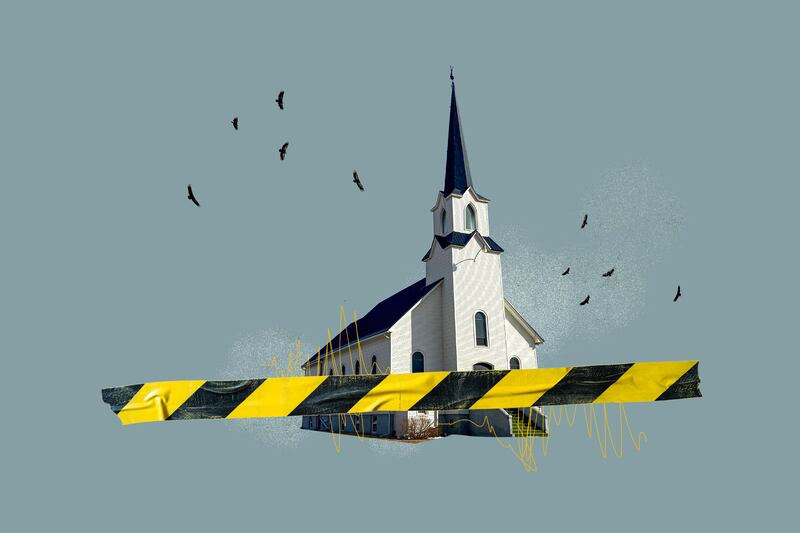The closure of the First Baptist Church of Mount Vernon, Illinois, marks a poignant chapter in the history of this congregation, founded in 1868. On July 21, 2024, the church held its final service, a moment that profoundly affected its former pastor, who has dedicated over 17 years to its community. The emotional weight of this closure continues to resonate, impacting both the pastor’s personal journey and the broader narrative of religious decline in the United States.
As the last benediction echoed through the empty sanctuary, the pastor, who has also gained recognition as a scholar in religious studies, found himself navigating a tide of public interest. Following the announcement of the church’s closure, media coverage surged. A notable article by Bob Smietana for the Religion News Service captured the essence of that final gathering, while a reflective piece appeared in the Deseret News, detailing the personal implications of the church’s end. This extensive media attention triggered an overwhelming response from the public, flooding his inbox with a mix of supportive messages and unsolicited advice.
The pastor reflects on the nature of these communications, noting two predominant themes. Many individuals attributed the church’s closure to external factors, such as the pastor’s part-time status or the perceived liberalism of the American Baptists. Contrary to these claims, the church had flourished for over a century, hindered primarily by financial constraints. Like many small congregations, it struggled to meet basic operational costs, a reality faced by numerous churches today.
The second category of emails came from fellow religious leaders, predominantly evangelical men, eager to offer unsolicited solutions to the church’s challenges. While their intentions were often well-meaning, the pastor felt a palpable frustration. He recognized a disconnect; these individuals, despite their enthusiasm for revitalization, failed to grasp the exhaustion that had permeated the congregation. After years of struggle, the closure was a relief rather than a failure, lifting a burden that many had carried for too long.
Among the more surprising interactions was an unsolicited early morning call from a pastor about 50 miles away, who offered a position as an unpaid associate. This interaction only underscored the pastor’s realization that his journey was uniquely his and not merely a narrative for others to dissect or fix.
Reflecting on the past year, he acknowledges the profound loss felt not only by himself but also by the remaining congregation. He had the honor of officiating the funerals of two church members, a reminder that as long as any former member is alive, he remains their pastor. This connection, he believes, transcends the physical space of the church, embodying a lasting bond of faith and community.
In the wake of the church’s closure, the pastor experienced a period of dormancy, stepping away from organized worship for about a month. This hiatus allowed him to delineate his past life from what was to come. When he eventually sought a new church community, he found himself inadvertently craving a return to the very environment he had left behind.
After exploring various local congregations, he now regularly attends a Methodist church. Despite the familiarity of former church members present, he often sits quietly, observing rather than leading. The experience is disorienting; he finds himself grappling with the shift from pastor to congregant, still seeking a sense of belonging while navigating the complexities of his new role.
Yet, amidst this transition, moments of hope emerge. Recently, during a hymn, he felt a fleeting sense of connection, harmonizing with former members, evoking memories of “the good old days.” In these instances, a glimmer of hope reassures him that healing is possible.
As he continues this journey, the pastor recognizes that while churches may close, the spirit of community and faith endures. The story of the First Baptist Church of Mount Vernon is not merely one of decline, but a reflection of the evolving landscape of American religion, where the past informs the future, and the bonds forged in faith continue to resonate in unexpected ways.
